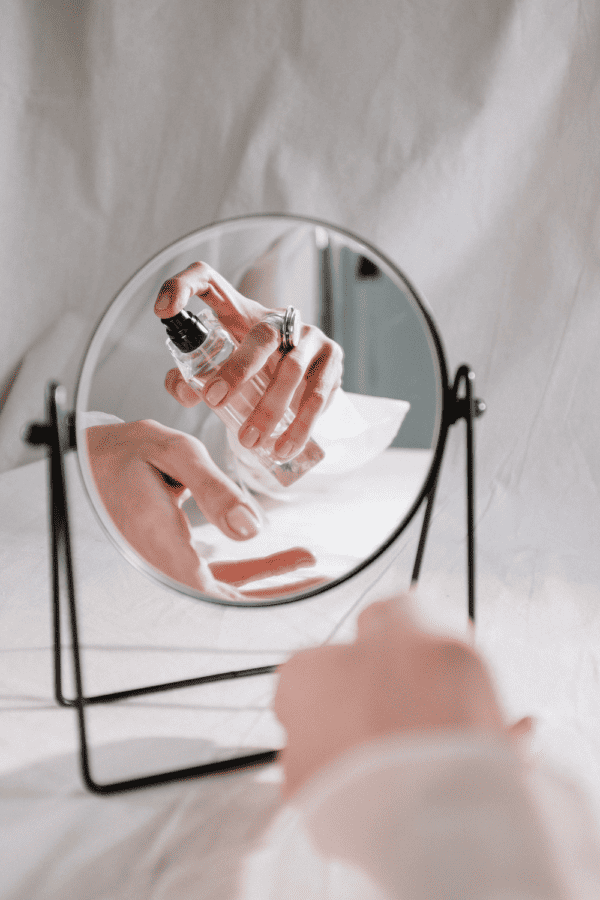The first underwear was loincloths, but these rudimentary body coverings quickly evolved to be more form-fitting and functional. By the early 1900s, everyone wanted underwear (albeit they looked much different than what you go out and purchase today!)
Some professionals claim your underwear is the most important piece of clothing you put on your body. Undies protect your most intimate areas, but can also directly affect the health of those highly sensitive areas of your body. Therefore, if you’re getting a rash from underwear elastic or some type of irritation from your boxers, briefs, or panties, you have a problem for sure.
But, the question is, are you actually allergic to your underwear? Is an underwear allergy even possible? If you think you might be having allergic reactions to your undies, take a closer look at the answers below.
Table of Contents
- First, a Few Signs You’re Wearing the Wrong Kind of Underwear
- What Causes a Bad Skin Reaction to Your Underwear?
- 1. Textile Dermatitis Caused By Allergies
- 2. Textile Dermatitis Caused By Chemical Sensitivities
- 3. Lack of Breathability and Excess Moisture
- 4. Not Changing Underwear Enough
- 5. Laundering Practices
- How to Avoid Irritation Caused by an Underwear Allergy or Otherwise
- 1. Switch Fabrics
- 2. Switch Other Aspects
- 3. Switch to Organic Underwear
- 4. Go Commando … Sometimes
- 5. Talk to Your Doctor
- What’s That Under There? Hopefully, Healthy Underwear!
First, a Few Signs You’re Wearing the Wrong Kind of Underwear
It might go without saying, but underwear should serve a few important purposes. These garments protect sensitive areas of your body from outer garments. They also help keep your outer garments free from sweat and typical bodily secretions. Underwear garments also offer support when you’re on the move, which can definitely be important.
However, all underwear is definitely not created equally. In fact, today’s underwear can be purely fashionable or aesthetically pleasing without providing a healthy layer of protection at all.
How do you know if you’re wearing the wrong type of underwear? Simply put: if you’re aware of your underwear, it’s probably not the best pick. The best-picked underwear does what it should without being all that noticeable. You may be wearing the wrong underwear if:
- The elastic waistband or leg cuffs dig into your skin
- Your skin gets hot and sweaty in intimate areas
- The material is too loose or hangs off of some areas
- You are constantly having to readjust your underwear under your clothing due to discomfort
- You experience skin chafing in places the underwear touches
And, of course, if you are getting a rash from underwear, feeling itchy, or your skin seems irritated, you should likely switch to another type or style.

What Causes a Bad Skin Reaction to Your Underwear?
If you realize your underwear is irritating your skin, an underwear allergy is possible. However, there can actually be a collection of problems to blame. Here are a few reasons why your skin could become uncomfortable or irritated due to your underwear:
1. Textile Dermatitis Caused By Allergies
Textile dermatitis is a type of contact dermatitis caused directly by exposure to fabrics or fabric components. In some cases, an allergy to the fabric can be to blame. Several fabrics, both synthetic and natural, are known to cause an allergic reaction or contact dermatitis, such as:
- Nylon
- Wool
- Polyester
- Latex
Due to the fact the material rests directly against your skin, if you do have an allergy, you are likely to experience an adverse reaction. People with eczema or sensitive skin care more prone to clothing dermatitis.
Plus, underwear can be made with a variety of blended materials, which might make it more difficult to pinpoint what the problem actually is.
Latex is one of the more problematic materials found in underwear. This stretchy compound is often used to make elastic waistbands, leg cuffs, and stretchy fabrics like Lycra or Spandex. Therefore, if you notice symptoms like itching or redness, especially around your waist or legs, you could have a latex allergy and you may be reacting to the elastic in underwear.
Keep in mind that just because latex is the fiber that most commonly causes allergic reactions, you can technically be allergic to any kind of fabric.
2. Textile Dermatitis Caused By Chemical Sensitivities
Textile contact dermatitis is not always allergy related; sometimes, symptoms are caused by exposure to certain chemicals or compounds found in the fabrics.
Unfortunately, there can be toxic components found in your underwear that you would never willingly choose to have hanging around your private parts at all. These components could easily cause a rash or bad reaction. Fabrics used to make undergarments may be directly treated with chemicals or otherwise contain chemical contaminants. For example:
- Stain-resistant underwear may be coated with “forever chemicals” like perfluoroalkyl and poly-fluoroalkyl substances (PFAS)
- Wrinkle-resistant or non-rolling underwear may be treated with formaldehyde, a common trigger for allergic contact dermatitis
- Colored underwear may be laced with chemically-formed “azo” dyes
- Underwear with antibacterial properties may be laced with questionable nano-particles like nanosilver
- Cotton underwear may be contaminated with pesticides
If you want to take a deeper dive into the toxins that can be found in textiles, you can check out this guide.
3. Lack of Breathability and Excess Moisture
Bacteria and yeast thrive in dark, moist environments where there is not a lot of airflow. Therefore, breathability and moisture absorbency are exceptionally important when it comes to picking underwear. Otherwise, you can be at risk of yeast infections, urinary tract infections, or an itchy rash.
Unfortunately, not all underwear materials are good at allowing air to flow through to the skin of your sensitive areas. Plus, many do nothing to absorb excess moisture. Finding underwear that can do both is even rarer. For example, a pair of lacy panties may offer plenty of airflow but do nothing to absorb moisture if they do not have a cotton crotch. Likewise, a pair of tight-fitting briefs made with nylon or spandex may absorb some moisture but restrict breathability completely.
The best pick for breathability and absorbency is usually cotton underwear. However, always make sure you are picking underwear made from organic cotton materials that are not likely to lead to chemical exposure and irritation.
4. Not Changing Underwear Enough
Use your own judgment here. If your bloomers or knickers are sweaty, smelly, or damp, change into a fresh pair. Any of these signs mean the fibers in the fabric have collected potential bacteria, but just the moisture alone can be enough to cause a rash or skin irritation for some people.
There is a common perception that changing underwear more than once a day is a waste of clean laundry. But, that perception is simply not true. Due to secretions and sweat around your nether regions, your underwear gets dirty faster than most other garments. So, it is perfectly fine—actually encouraged—to change your underwear multiple times a day if needed, especially if you’ve been exercising or have very sensitive skin.
Speaking of clean underwear, personal hygiene is also important. There’s only so much clean undergarments can do to protect you if you are not keeping your intimate areas clean.
5. Laundering Practices
Irritation in your private areas due to exposure to laundry detergent, fabric softeners, or other agents that come from the laundry is also something to consider. Even if your usual detergent doesn’t bother the rest of your body, it could cause irritation to your intimate areas. For example, the vagina contains a delicate balance of good bacteria, which can be disrupted by fragrance additives in laundry soaps or softeners.
If you suspect laundering practices are to blame for underwear irritation, a few guidelines to try include:
- Try washing your underwear by hand and not with other clothing
- Switch to enzyme-free and non-toxic laundry detergent
- Skip fabric softener and dryer sheets (or at least switch to a non-toxic alternative)

How to Avoid Irritation Caused by an Underwear Allergy or Otherwise
Picking underwear should truly be one of the most careful apparel-choosing processes. However, if you have sensitive skin or have been dealing with an underwear rash with your underwear, it is even more important to find better options. Here are a few tips.
1. Switch Fabrics
If you suspect you are having a reaction to a certain fabric type or material, make a switch to something new. For example, if you normally wear boxers that contain nylon and have a lot of issues, trade them in for cotton. If you spot a rash around your underwear elastic, pick up a brand that does not use rubber or latex in its elasticized bands.
(Here are the best brands for hypoallergenic underwear for adults and kids, and here are our top picks for allergy-friendly bras.)
2. Switch Other Aspects
If you know your underwear is causing irritation but switching fabrics doesn’t help, try:
- Switching to a different style (e.g. switching your bikini styles for hipsters or briefs for boxers)
- Trying a different underwear brand to potentially get away from certain processing chemicals
- Picking white underwear without dyes instead of colored underwear
- Making sure your underwear allows your skin to breathe
- Changing up your laundering habits and dropping fragrance-filled laundry-softening products
- Adjusting the size of underwear you wear (nothing too tight, too loose, or ill-fitting)
3. Switch to Organic Underwear
Additionally, it is always worth considering underwear that’s made from organic fabrics if you are especially sensitive. You can find everything from organic cotton underwear for women to organic hemp underwear for men.
4. Go Commando … Sometimes
Going commando (with no underwear at all) at certain times may actually be beneficial. For example, it may be good to skip the underwear at bedtime and let all your private bits breathe while you sleep. For women, sleeping sans panties may reduce vaginal odors, risks of yeast infections, and more. Men may lower their risks of chafing and jock itch or even support healthy fertility by not wearing underwear all the time.
5. Talk to Your Doctor
Lastly, if you’ve tried all the above to no avail, it is best to talk to your doctor. You may have an underlying health condition that needs to be addressed. Or, you may simply need a good allergy or skin sensitivity test to determine what it is in your underwear that could be causing you discomfort and irritation.
What’s That Under There? Hopefully, Healthy Underwear!
All jokes aside, your underwear is kind of a big deal. Further, any allergic reactions or skin irritation around your genital regions can become a serious issue faster than on other areas of your skin. So, if you’re dealing with what you suspect is an underwear allergy or a rash from underwear, pay attention and make some changes. Interested in learning more about toxic chemicals found in clothing? Be sure to find out what textile chemicals could be hanging out in your closet (or underwear drawer).
Related Articles:
We’ve got LOTS of healthy underwear guides to help you find what you’re looking for!
- These underwear and bra brands are the most allergy-friendly ones on the market
- Best Underwear Brands for Women that use (mostly) organic cotton
- The best hemp underwear brands
- The comfiest organic bras
- Where to find TENCEL underwear
- Organic thongs
- The best maternity underwear and nursing bras
- Organic boxers for men
- Here are the best size-inclusive organic cotton underwear brands
More Sources:
- https://www.healthline.com/health/wool-allergy
- www.healthline.com/health/polyester-allergy
- https://www.ncbi.nlm.nih.gov/pmc/articles/PMC5356959/
- https://health.missouristate.edu/_Files/Guidelinesforvulvarcare.pdf
- https://ceh.org/yourhealth/wondering-if-you-should-jump-on-the-organic-cotton-train/
- https://www.healthline.com/health/going-commando-men#benefits
- https://www.niehs.nih.gov/health/topics/agents/pfc/index.cfm
- https://www.ncbi.nlm.nih.gov/pmc/articles/PMC9318620/
- https://pubs.acs.org/doi/10.1021/nn4050744
- https://www.healthline.com/health/womens-health/underwear-hygiene#1.-Overall,-choose-natural-fabrics-specifically-cotton




